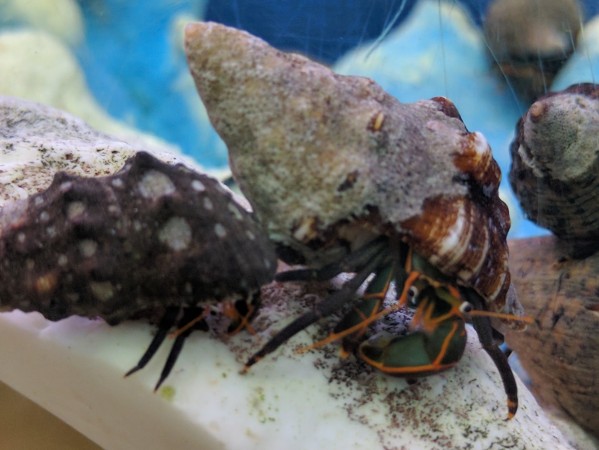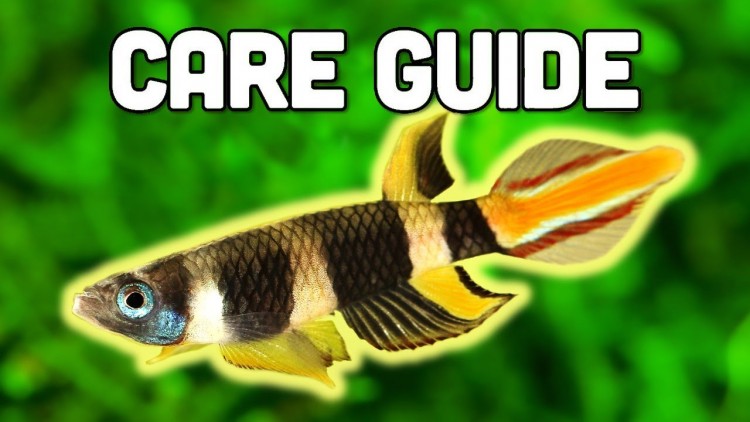Marine Aquarium Hermit Crabs: Care, Habitat, Diet & More
- Feb 09, 2023
- PalaciosAn
- 3469 0 0

Discover everything you need to know about keeping marine aquarium hermit crabs as pets, including habitat setup, diet, molting and shedding, and social behavior.
Marine aquarium hermit crabs are small crustaceans that are popularly kept as pets in home aquariums. They are known for their unique appearance and entertaining behavior, making them a fascinating addition to any marine aquarium setup.
Hermit crabs make a great addition to marine aquariums as they are low maintenance, fascinating to watch, and can add diversity to your marine aquarium. They are also a good choice for those who are new to marine aquariums, as they are relatively easy to care for.
There are several species of hermit crabs that are suitable for aquariums, including the blue-legged hermit crab, red-legged hermit crab, scarlet hermit crab, electric blue hermit crab, and painted hermit crab.
Hermit Crab Habitat
The size of the tank you will need depends on the number of hermit crabs you plan to keep. A general rule of thumb is to provide at least 10 gallons of water per hermit crab. When setting up the tank, make sure to include a substrate and decor that will provide hiding places and climbing opportunities.
Hermit crabs need a substrate to burrow in and a decor/live rock that will provide hiding places. A good substrate to use is a mixture of sand and crushed coral. Decorations can include rocks, shells, and live plants or artificial plants. Make sure that any decorations you use are not too small or sharp so that the hermit crabs do not hurt themselves.
Hermit crabs require lighting to maintain their circadian rhythm. It is important to provide a source of light that mimics natural light. The ideal water temperature for hermit crabs is between 72-78°F. A heater and thermometer can be used to ensure the water temperature remains stable.
It is important to maintain good water quality in the aquarium to keep the hermit crabs healthy. A good filtration system should be used to remove waste and maintain water quality. Regular water changes should be performed to keep the water fresh and free of harmful chemicals. Additionally, make sure to use a good quality salt mix to mimic the natural seawater environment.
Hermit Crab Diet
Hermit crabs are omnivores and require a balanced diet to maintain their health. Their diet should consist of both plant and animal material, as well as calcium and other minerals to support their shell growth.
Feeding Frequency and Types of Food Hermit crabs should be fed daily with small amounts of food. Offer a variety of foods, including dried seaweed, pellet food, fresh fruit and vegetables, and small pieces of meat or seafood. You can also feed hermit crabs live or frozen foods, such as brine shrimp or krill.
In addition to offering a variety of foods, it is important to supplement their diet with calcium and other essential minerals. A cuttlebone or mineral block can be placed in the tank for the hermit crabs to feed on as needed.
Avoiding Overfeeding Hermit crabs have a tendency to overeat, so it is important to monitor their food intake and remove any uneaten food from the tank to prevent contamination. Offer small amounts of food at a time and only feed as much as the hermit crabs can consume within a few hours. Overfeeding can lead to health problems and water quality issues.
Hermit Crab Molting and Shedding
What does it mean to when someone says a hermit crab is Molting and Shedding? Molting is the process by which hermit crabs grow and shed their exoskeleton. This is a normal and necessary process for hermit crabs to grow and maintain their health. Shedding refers to the process of removing the old exoskeleton and the replacement of it with a new one.
Why is it Important for Hermit Crab Health? Molting and shedding are important for hermit crab health because it allows them to grow and replace its old exoskeleton with a new one. This new exoskeleton provides them with protection, support, and room for growth. Additionally, molting and shedding can also help to remove any parasites or other organisms that may have attached to the old exoskeleton.
Signs that a hermit crab is about to Molt or Shed can include the hermit crab appearing sluggish or inactive, spending more time in hiding places, and appearing lighter in color. Additionally, the old exoskeleton may be visible in the tank.
To support hermit crabs during molting and shedding, it is important not to disturb the hermit crab during this process and to provide plenty of hiding places for them to retreat to. Once the molting and shedding process is complete, removing the old exoskeleton from the tank is important to prevent contamination.
Normal Behavior of a Hermit Crab
Climbing and exploration are important for hermit crab health and well-being. These activities provide mental stimulation, physical exercise and help to prevent boredom. Additionally, climbing and exploration can help hermit crabs to find food and establish their territory in the tank.
You need to provide climbing opportunities in the tank. You can add climbing structures such as rocks, branches, and live or artificial plants. You can also create a multilevel environment by using aquarium backgrounds and decor to create different levels and heights within the tank.
Hermit crabs can be kept in groups, but their social behavior can vary depending on the species. Some species of hermit crabs are more social and can be housed together in large groups, while others may be more solitary and should be housed separately. It is important to research the specific species of hermit crab you have and to understand their social behavior before housing them with other hermit crabs.
When housing multiple hermit crabs, it is important to provide enough space and resources for all of them to live comfortably. This may include multiple hiding places, climbing structures, and food. Additionally, it is important to monitor the hermit crabs for any signs of aggression or territorial behavior and to separate them if necessary.
Hermit crabs can display aggression and territorial behavior towards each other, especially when there are limited resources in the tank. To prevent this, it is important to provide enough space and resources for all hermit crabs to live comfortably. Additionally, it is important to monitor their behavior regularly and to separate any hermit crabs that display aggressive or territorial behavior.
Stress can have a negative impact on hermit crab's health and well-being. To prevent stress, it is important to provide a comfortable and stable environment with proper temperature, lighting, water quality, and food. Additionally, it is important to avoid overcrowding and to monitor the hermit crabs for any signs of stress, such as lethargy or changes in behavior.
Keeping Hermit Crabs in a marine aquarium can be a rewarding and enjoyable experience. However, it is important to understand the needs and requirements of these fascinating creatures in order to provide them with the best possible care. By following the guidelines outlined in this article, you can create a healthy and comfortable environment for your hermit crabs and ensure that they live a long and happy life.







About author
I have been in the hobby for a while, my main focus is automation. I am interested in doing aquaponics in 2018.